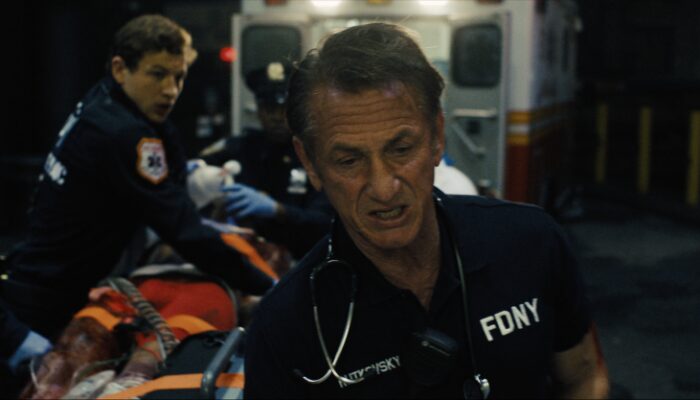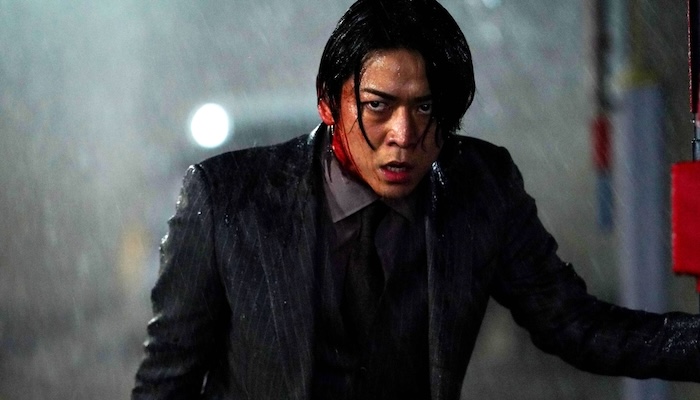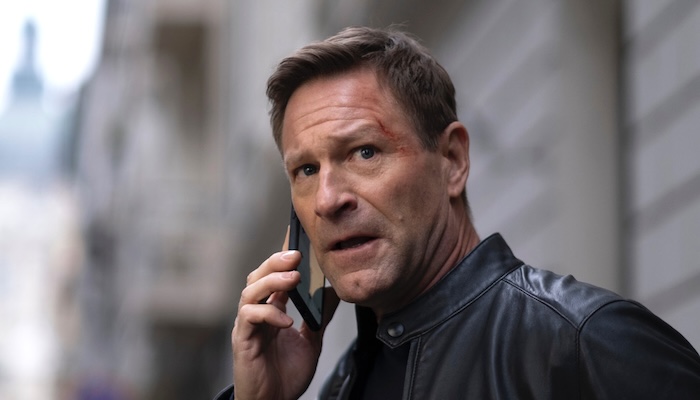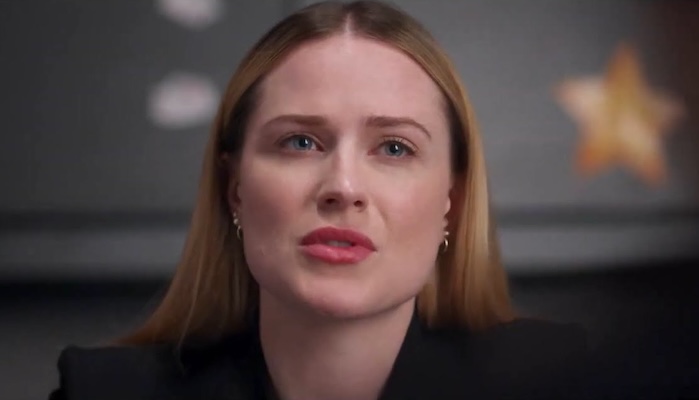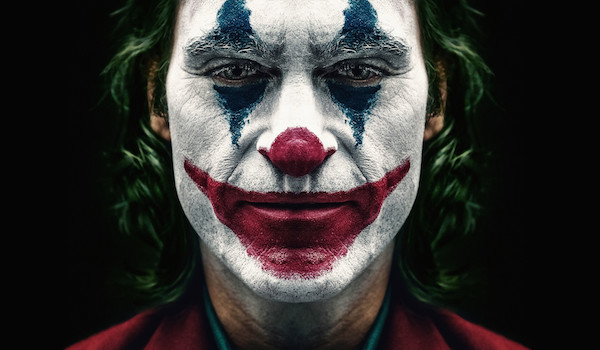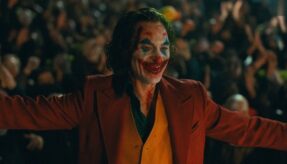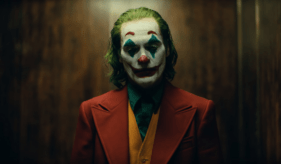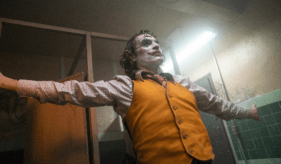Film Review: JOKER (2019): A Nihilistic Villain Given a Sympathetic Backstory & Depth in a Near-miss Game-changer
Table of Contents
Joker Review
Joker (2019) Film Review, a movie directed by Todd Phillips, and starring Joaquin Phoenix, Robert De Niro, Zazie Beetz, Bill Camp, Frances Conroy, Shea Whigham, Glenn Fleshler, Brett Cullen, Marc Maron, Douglas Hodge, Josh Pais, and Jolie Chan.
Joker is the best supervillain origin story film that the viewer may have ever seen. Joker, like Logan, proves that comic book adaptations can be great human dramas, or tragedies in this case, if the material is properly adapted. Todd Phillips and Scott Silver‘s script for Joker should be commended, and probably will be, for its treatment of its lead character, his mental condition, his past, his environment (i.e. the nostalgia of the film’s setting), and the objective tone with which the protagonist and the film are handled.
Joker is not an assembly-line Marvel or DC Comics film. It’s singular. Unique. Standalone (a rarity in comic book films these days, if Joker can truly be deemed a ‘comic book’ film). Joker is character study that involves the flesh and blood incarnation of a villain found in comic book stories, made three-dimensional, given a backstory, a family, and a life outside of the criminal world.
Joaquin Phoenix’s Performance
It is not surprising that Joaquin Phoenix is as good in Joker as he is. The unspoken quality of this comic book adaptation’s script is also without question. It is extremely doubtful that Phoenix would have deigned to portray such an iconic character if the script for the film was not of an extremely high grade. Sympathy for Arthur Fleck (Joaquin Phoenix) drives the viewer’s engagement in the film. Phoenix and the film’s screenplay are responsible for this feat.
Phoenix, without acting crazy à la Batman Forever, is crazy in Joker. His insanity is subtle, so that he can pass as an Average Joe without anyone knowing what is going on in his head. Brian Cox as Hannibal Lecter in Manhunter accomplished this same achievement.
Phoenix’s facial expressions and the unquiet elements in the script – some of Arthur’s fellow employees are creep-ed out by him (the medicated version of Arthur that strives to be happy and normal), masturbating on his dead mother’s bed after murdering her, etc. – all add to the disquiet of Phoenix’s Joker.
Arthur doesn’t want to be evil, doesn’t want to do bad, and he isn’t a criminal. This is what separates him from all the other live-action incarnations of The Joker. Joker‘s screenwriters bring that understanding and empathy to Arthur’s characterization throughout the entire film.
The Joker’s Laughter
Having Arthur’s incessant and uncontrollable laughter being the result of childhood physical trauma is another element that sets Joker‘s incarnation of the Clown Prince of Gotham apart.
Because of his mental condition, when Arthur is laughing (but doesn’t want to), half the time the situation that he is laughing at is not funny. On the contrary, in some instances the situation is uncomfortable (e.g. the city bus scene) and in others, its tragic (e.g. when Arthur learns the truth about his mother and his past).
During all of his laughing fits, the viewer is given a clear view of Arthur’s neurosis and what he is feeling, regardless of what is coming out of his mouth. That is due to the award-worthy performance given by Phoenix during the film. It can’t be easy to show two emotions coterminous but Phoenix pulls it off with a smiling, giggling mouth but with eyes filled with sadness and a forehead trembling in sorrow.
The height of these laughing fits are the train scene and the comedy club scene. The former is another illustration of Arthur’s unmanageable laughter and differing emotions erupting simultaneously while the latter is a different emotion, extreme nervousness, bursting forth while he is on-stage for the first time (despite a valiant attempt to stifle it – engendering sympathy from the viewer).
Arthur Fleck’s Dancing
Arthur Fleck’s insanity is shown in many ways in Joker. It is through Arthur’s dancing, before and after key moments in his life, that show his fantasy world breaking in, step-by-step, into his real world.
Instead of performing for others (his clown profession) during these instances, he is performing for himself, an audience of one. Since his audience has shrunk to such a minuscule degree, it doesn’t matter how someone else might perceive him. It only matters how he sees himself. Arthur believes that his life is a comedy, a tragic comedy where the joke is on him. By the time the first dance takes place, Arthur has begun to revel in that comedy, in his lead role in it, as the sensation to sway with it moves his body, almost of its own volition.
This first occurs after the killings on a train when Arthur’s foot in a bathroom begins to slid forward all by itself (the camera deftly shifting downward to capture it). It’s like the crescendo to a symphony concludes, the spotlight is now on the principal dancer, and that dancer performs for a hushed audience that resides in shadow. It is a masterful moment in the film, nearly transcendent – when is the last time we’ve seen a comic book film do anything like this? Alex Proyas‘ The Crow?
The same occurs, far subtler but with much more glee and gusto, on a Gotham City staircase after Arthur’s outer metamorphosis is complete, jubilant in his new existence and new-found freedom. The constraints that formerly bound him – his mother, his medication, his general sense of right and wrong – have been thrown aside (some violently). Arthur has been replaced with Joker and Joker couldn’t be happier.
The final occurrence happens before Joker is introduced on Live With Murray Franklin. Joker begins to move to something that only he hears before the curtain is drawn. What is striking about this moment is that he does so in front of two other people, people that don’t know what to make of it. At this point, Joker is past caring about what other people think. He might not even be aware of their presence. If he is, he doesn’t care. He is somewhere else.
The Film’s Two Great Head-fakes
The viewer is hoodwinked on two occasions during Joker, and by the deployment of those narrative and visual tricks, the usual is layered with the unexpected. The first is when the viewer is led to believe that Arthur is in a loving relationship with single mom Sophie. The second is when the viewer is made to think that Arthur is suicidal and is planning to kill himself on live television. Though these mis-directions are clever, it’s the resultant story-lines created by them that are so gratifying.
The Girlfriend Delusion
One of the best moments in Joker is the ending given to the ‘relationship’ between Arthur and Sophie Dumond (Zazie Beetz). The viewer never sees it coming, which is its best aspect. It’s akin to the revelatory moment in Ron Howard‘s A Beautiful Mind when after it occurs, everything that the viewer previously saw up to that point is seen through an entirely new lens. Though its done to far greater effect in A Beautiful Mind, in Joker, it successfully shows a key aspect of Arthur’s abnormal mental state.
Arthur knows that he doesn’t have a real relationship with Sophie, but he wants one, imagines one, and when he ends up in her apartment, unannounced, his desire and reality collide.
By that point, Arthur’s impulse control has been severely lowered, as has his reflex to care about repercussions. Arthur is past the constraints of normalcy by the time he ends up on Sophie’s couch.
At first, when she sees him in her apartment and is startled, the viewer thinks that Sophie just hasn’t recognized Arthur from behind. Then it dawns on the viewer that the two of them are virtual strangers and have never been in a relationship, let alone a sexual one.
It is a wonderfully executed head-fake and it makes Arthur and Sophie’s ‘relationship’ actually rewarding, far more so than it would have been if it were real and Sophie was healing a broken part of Arthur through her affection, attention, and love.
Live With Murray Franklin Coup-de-grace
Fans of The Dark Knight Returns by Frank Miller saw part of what happens on Live With Murray Franklin coming but not quite. From the beginning, the unexpected occurs. As soon as the curtain is drawn, Joker is rip-roaring, spinning, kissing, making a spectacle out of himself and doing what no one sees coming, including the viewer. That unpredictability makes one think of Heath Ledger‘s Joker, but only in passing – this is Phoenix’s Joker. With the plethora of emotions that Phoenix goes through while on Live With Murray Franklin, its one of the highlights of Phoenix’s acting in the film. Everyone on the talk show has differing agendas until Joker supplants them all – the over-looked (for all of his life) becomes the center of attention.
When the bullet rips through Murray Franklin (Robert De Niro)’s head, its not just the end of his life, its the formal end of Arthur Fleck’s inner metamorphosis. If the dance on the staircase, once the last steps in the drudgery of Arthur’s life, had delivered him to the precipice of transformation, killing Murray is the ushering in of that new existence.
And by explicit implication, a new existence for Gotham City as well.
The Film’s Ending (A Gigantic Missed Opportunity)
Joker‘s ending is when the film reaches its absolute high-point, Gotham-in-anarchy, a city in the grips of a full-scale riot with people, lacking a Fight Club-like outlet, running amuck on the streets. It’s a nightmare scenario, a hell-scape ignited by a single match. What follows that outburst of flame and destruction is a series of events that culminate in a moment of ascendancy for Arthur, a fever dream where Arthur is finally visible, where people not only see him, they revere him.
Director Todd Phillips has the perfect ending to Joker right there and vexingly bypasses it for a final Arkham Asylum scene and a final delusion scene. What’s worse about this choice is that it is not clear if the Arkham scene in pre-riot, when Arthur was originally locked up in the past, or post-riot, after he is re-captured (off-screen) by the police.
Joker has the ultimate, sharp, finely-tuned conclusion (i.e. Joker smearing blood across his lips, turning to his ‘audience’, and receiving their cheers as the city burns all around them), and like a raven escaping through an open cage door, Phillips lets it slip through his fingers.
The chosen finale (or finales) skips the aforementioned powerful ending for two scenes that should be regulated to the deleted scenes section of the in-home release for Joker.
At best, the Arkham Asylum and delusion scenes (respectively) should be mid-credit and end-credit scenes in the film. They don’t advance the film’s story-line after Joker’s victorious moment on top of the police car. Instead, they add ambiguity to the film and to the film’s ending.
Rating: 9/10
Leave your thoughts on this Joker review and the film below in the comments section. Readers seeking to support this type of content can visit our Patreon Page and become one of FilmBook’s patrons. Readers seeking more film reviews can visit our Movie Review Page, our Movie Review Facebook Page, and our Movie Review Pinterest Page. Want up-to-the-minute notifications? FilmBook staff members publish articles by Email, Twitter, Facebook, and Tumblr.
Related Articles
FilmBook's Newsletter
Subscribe to FilmBook’s Daily Newsletter for the latest news!


